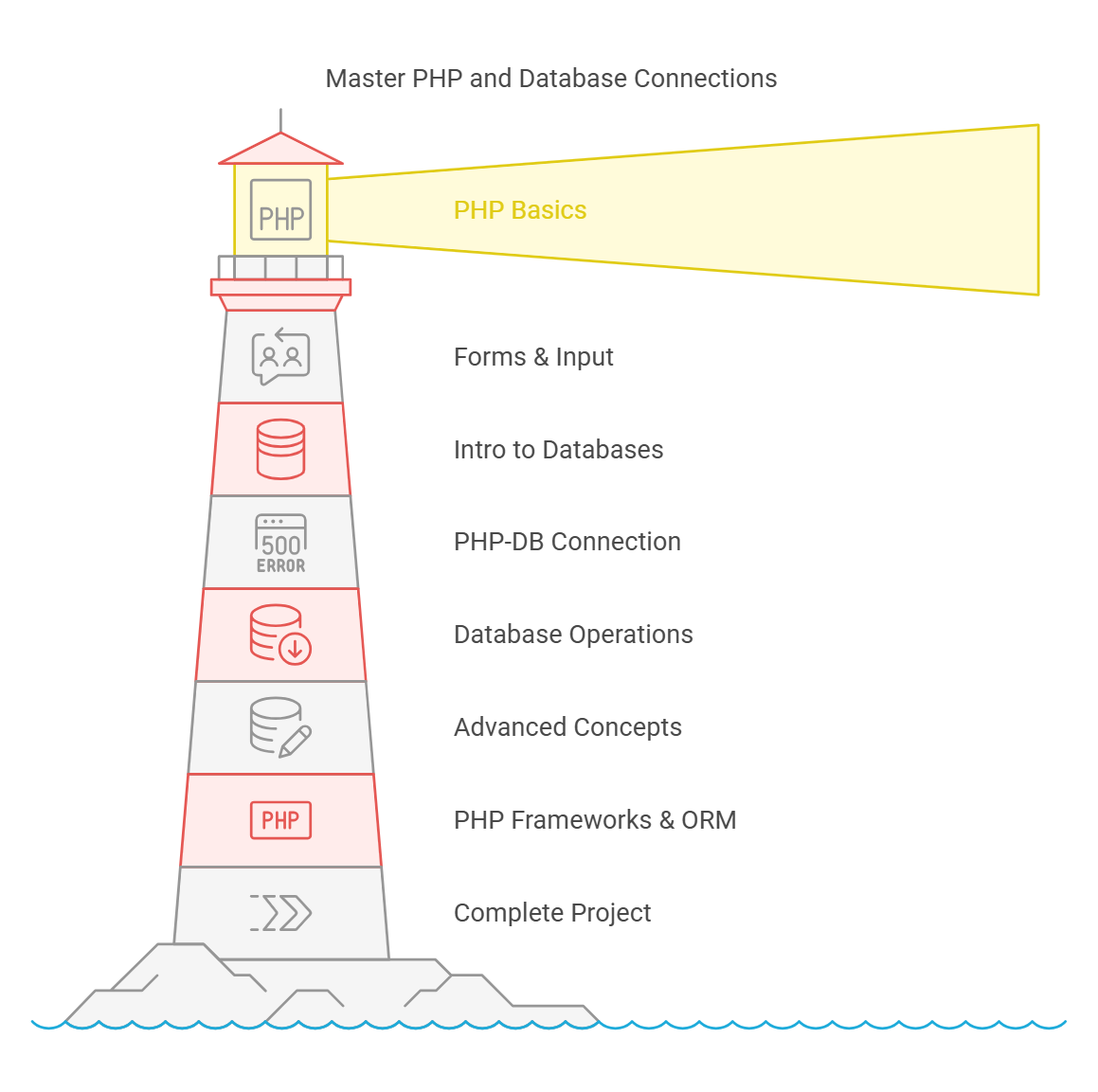Welcome to the PHP Tutorial
Select a topic from the sidebar to start learning.
Roadmap to Learn PHP

Introduction to PHP
PHP (Hypertext Preprocessor) is a widely-used open-source general-purpose scripting language that is especially suited for web development. It can be embedded into HTML.
PHP is executed on the server, and the result is returned to the browser as plain HTML. This means users cannot view the PHP code itself.
Key features of PHP include:
- Server-side scripting
- Cross-platform compatibility
- Database support
- Large community and extensive libraries
- Relatively easy to learn
Myths and Facts About PHP
| Myth | Fact |
|---|---|
| PHP is slow. | Modern PHP versions (PHP 7 and 8) are significantly faster than older versions. Performance improvements have been substantial. |
| PHP is insecure. | Like any language, PHP can be vulnerable if not used correctly. Secure coding practices and regular updates are crucial. |
| PHP is outdated. | PHP continues to be actively developed and maintained. Many large websites and applications still rely on PHP. |
| PHP is only for small projects. | PHP can be used for large-scale applications. Frameworks like Laravel and Symfony are used to build complex systems. |
| PHP is difficult to maintain. | With proper code organization and frameworks, PHP projects can be highly maintainable. |
| PHP has inconsistent syntax. | While older versions had inconsistencies, modern PHP has improved consistency. Standard coding styles can further enhance readability. |
Why Learn PHP?
- Versatility: PHP can be used for web development, command-line scripting, and even desktop applications
- Popularity: Powers over 75% of all websites using server-side programming
- Job Opportunities: High demand for PHP developers in the job market
- Frameworks: Powerful frameworks like Laravel, Symfony, and CodeIgniter
- Community Support: Large community with extensive documentation and resources
PHP Learning Topics
| Topic | Description |
|---|---|
| Basic Syntax | Understanding PHP tags, comments, and basic output |
| Variables & Data Types | Working with strings, integers, arrays, and objects |
| Control Structures | If-else statements, loops, and switch cases |
| Functions | Creating and using functions in PHP |
| Forms Handling | Processing form data with PHP |
| Database Connectivity | Connecting to MySQL and other databases |
| Object-Oriented PHP | Classes, objects, inheritance, and interfaces |
| Security Practices | Preventing SQL injection, XSS, and CSRF attacks |
| PHP Frameworks | Introduction to Laravel, Symfony, and CodeIgniter |
| API Development | Creating RESTful APIs with PHP |